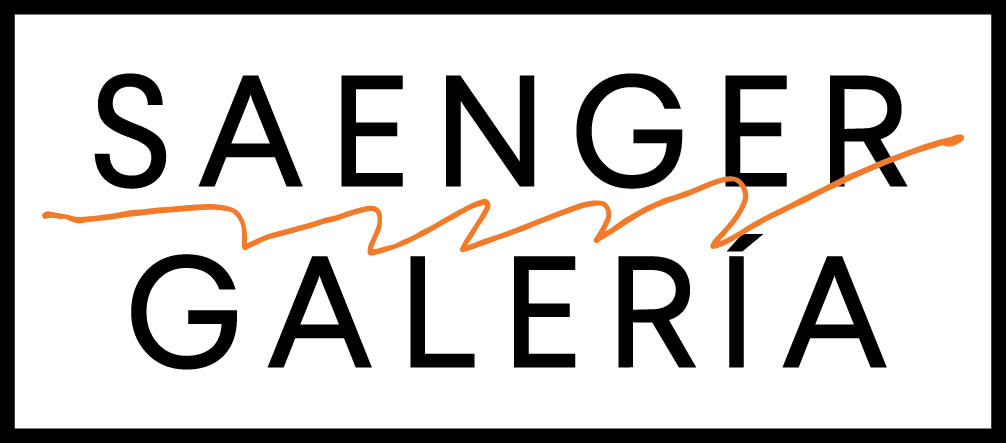Crack the code by Alejandro Pintado
The second solo exhibition at Saenger Galería's Project Room consisted of a large and unprecedented pictorial installation by Mexican artist Alejandro Pintado (CDMX, 1973). Created especially for this occasion, the show comprises a diverse constellation of works in different media: from oil painting, sculpture in cement and light, to charcoal drawing, ephemeral intervention with vinyl film and digital graphics. In the words of Luis Rebaza Soraluz, the work created by Pintado in recent years "is united by a major reflection on landscape, understood in terms of a way of representing (the pictorial genre) as well as of perceiving (of looking, above all) and conceiving (natural idealization, scientific explanation)". This affirmation is evident in the current selection and arrangement of elements that, despite the multiplicity of their variety, are convergent in the same end; namely, to transfer the gaze and the looked at.
That triangle that has fascinated painters of the past as well as contemporary travelers, a figure that in the first of its angles welcomes the landscape, in the second the human being and in the third the vertex where both coincide, that threshold that humanity has indistinctly called vision, reality, poetry, faith, science, art, and as many other names as senses have been deciphered. Just as through visual representation occurs the transposition of the sensible to the intelligible, so does the reverse, making knowledge a trajectory towards a concrete universe, within reach of the hand, or better yet, within reach of a sensitive gaze. According to Rebaza Soraluz, "Pintado's visual images and perceptible environments are not limited to dealing with a landscape where space is prioritized, as they also present juxtaposed two ways of understanding time: as a cyclical continuity of the natural and as a progressive linearity of rationality. It could be said then that Alejandro Pintado's recent work, his reflection on the landscape subject to the gaze, has as its background the relationship between nature and the human to present and discuss the organic and geometry, the matter of this world and science, in an unstable balance".



